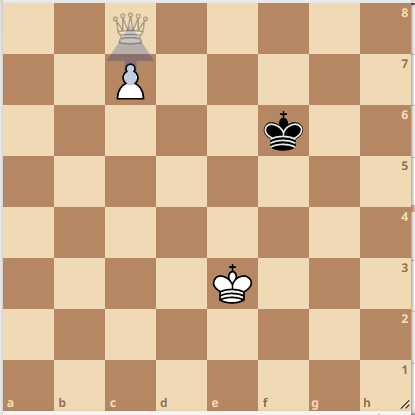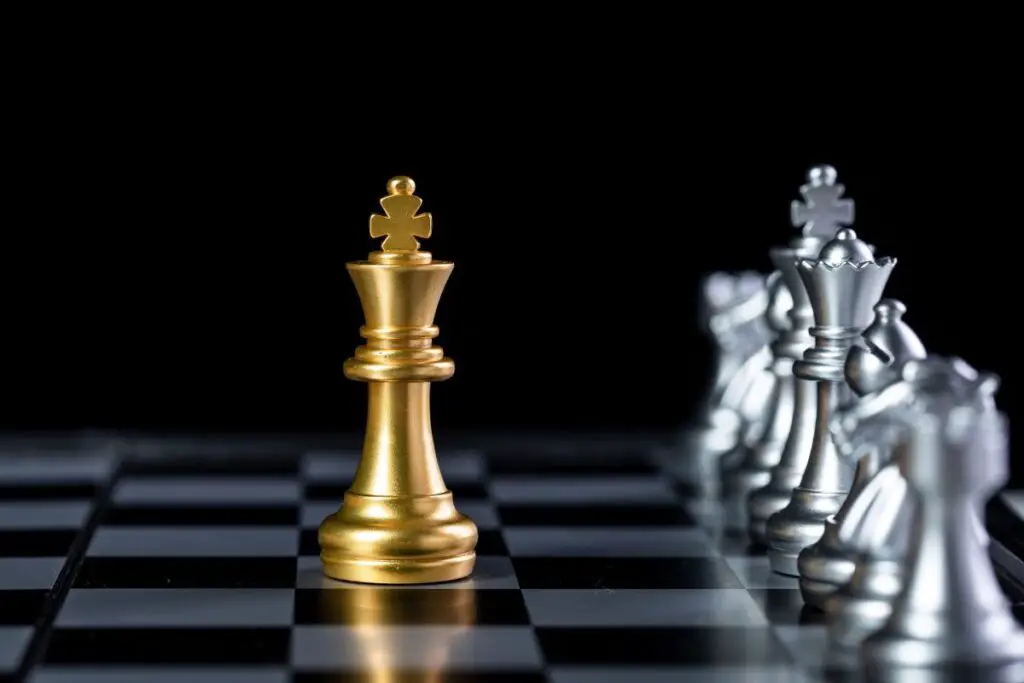Chess is a game of strategy and tactics that has fascinated people for centuries. One of the most important pieces on the board is the king, whose role is to be protected at all costs as checkmating the king marks the end of the game.
If you are new to chess, you may have seen the strange looking move castling, which involves moving the king and rook on a single turn. But do these pieces actually swap places when castling? Can the king swap places with another piece? In this article, we explore this intriguing question. Read on to find out the answer.
Can The King Swap Places In Chess?
No, the king doesn’t actually swap places in chess. If we are talking about castling, the king moves 2 spaces towards the rook in the corner, then the rook moves to the square on the other side of the king. Castling is the only move in chess where a player can move 2 pieces in a single turn.
The king doesn’t actually swap places with the rook

The king moves from e1 to g1, whereas the rook moves from h1 to f1
When castling with the king and rook, there are certain conditions that must be met:
- The king and the rook involved in castling must not have moved previously during the game.
- There must be no pieces between the king and the rook involved in castling.
- The squares the king moves through during castling cannot be under attack by any of the opponent’s pieces.
- The king cannot castle out of, through, or into check.
These conditions apply to both white and black players, for both kingside and queenside castling. For black, kingside castling involves moving the king two squares towards the rook on the player’s left, while queenside castling involves moving the king two squares towards the rook on the player’s right.
The direction of castling is mirrored for white. That is, for white, kingside castling involves moving the king two squares towards the rook on the player’s right, while queenside castling involves moving the king two squares towards the rook on the player’s left. All in all, the king does NOT swap places with the rook.
Click here to learn more about castling
Can You Swap Pieces In Chess?
In chess, it is not possible to swap or exchange the positions of two pieces on the board, except when a pawn is being promoted (as you’ll find out later). Each piece has its own unique set of movements and can only move to a vacant square.
However, pieces can capture or take opponent’s pieces by moving to their square and removing them from the board. This is a fundamental aspect of chess strategy and can help players gain an advantage over their opponents.
Swapping Pawns For Queens (Promotion Explained)
Pawn promotion is a rule in chess that allows a pawn to be promoted to a more powerful piece once it reaches the opposite end of the board. When a pawn reaches the opponent’s first rank, it can be exchanged for a queen, rook, bishop, or knight of the same color. Promotion is the only time you can swap a piece in chess.
The player can choose which piece they want to promote the pawn to, and the promoted piece is placed on the square the pawn reached on the final rank.
Pawn promotion is a crucial aspect of chess strategy because it allows pawns, which are initially the weakest pieces on the board, to become powerful attacking pieces. The promotion can also be used tactically to create new threats or to defend against the opponent’s attacks. Knowing when and how to promote a pawn is a key skill in chess, and it can often be the deciding factor in a game.
The pawn is swapped for a queen once it reaches the last rank

Benefits of Castling Your King
Castling your king in chess can provide several benefits, including:
- Safety: By castling, the king moves away from the center of the board and closer to the edge, where it is less vulnerable to attack. Castling can help to create a fortress around the king, making it more difficult for the opponent to launch a successful attack.
- Development: Castling can help to develop the rook involved in the castling move, which often starts the game inactive in the corner of the board. By castling, the rook is brought towards the center of the board, where it can be more useful in attacking or defending.
- Control: Castling can help to control key squares and lines on the board. For example, kingside castling often results in the rook controlling the central files namely the d and e file.
- Flexibility: By castling, the king can be moved to a safer position, while the other pieces can be used more flexibly to carry out various plans and strategies.
Overall, castling is a valuable tool in chess, which allows players to improve the safety of their king, develop their pieces, control important areas of the board, and create more flexible positions.
How To Use Your King Effectively In Chess?
The king is the most important piece in chess, and its primary objective is to avoid being checkmated. However, the king can also play an active role in the game, and there are several ways to use it strategically:
- Safety: The first priority of the king is to keep it safe from harm. This means keeping it protected by other pieces and not exposing it to unnecessary risks. Players should avoid moving the king into the center of the board, where it can be more vulnerable to attack. This applies especially in the opening and middlegame phases.
- Endgame: In the endgame, the king can become an important attacking piece. With fewer pieces on the board, the king can be used to support the player’s pawns or to help capture the opponent’s pawns. The king can also be used to create mating nets, where the opponent’s king is trapped and unable to move.
- Support: The king can support other pieces by defending them or by providing a safe square for them to move to.
- Centralization: In some situations, the king can be moved towards the center of the board to support the player’s attack or to control important squares. However, this should only be done when it is safe to do so and when the king is not at risk of being attacked. The best time to move your king to the center of the board is in the endgame when most of the enemy pieces have been captured off the board.
Overall, the king should be used carefully and strategically in chess, with a focus on keeping it safe and using it to support other pieces or to create attacking opportunities.


